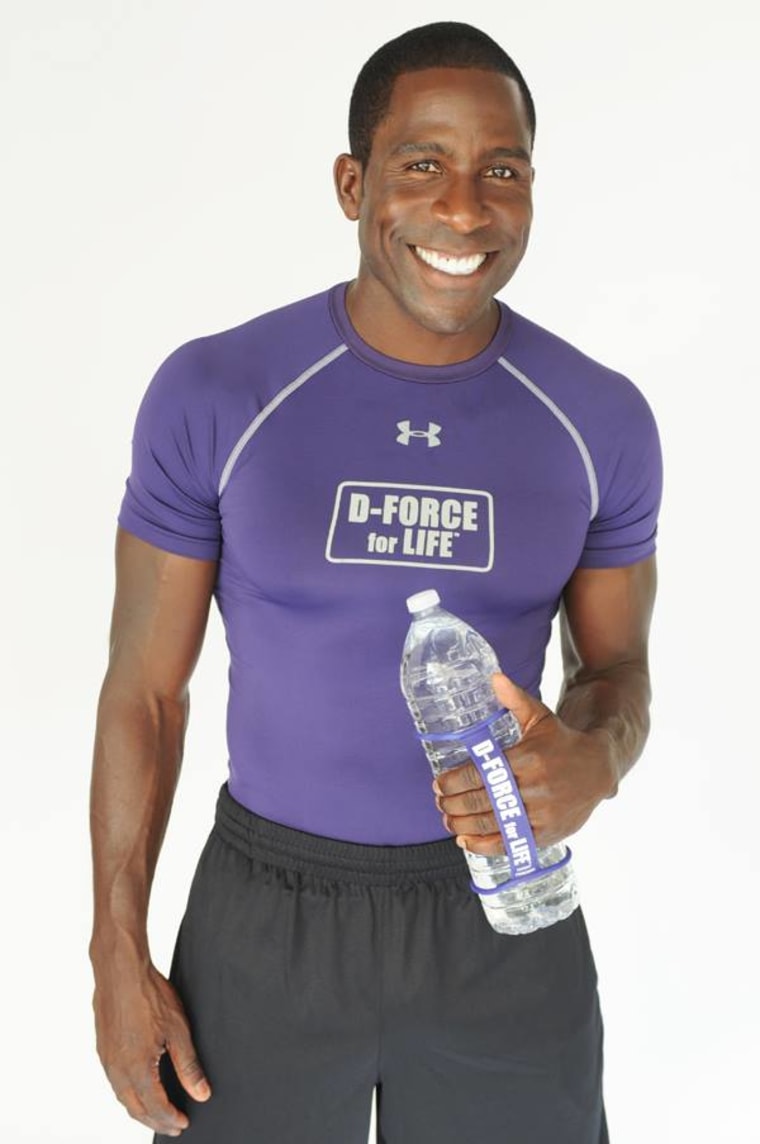As one of the 29 million people in the United States living with diabetes, Rufus Dorsey knows the challenges of managing a chronic illness. A popular high school athlete who excelled in football, basketball, and baseball, actor Dorsey was shocked when a routine athletic physical left him with a diagnosis of Type 1 diabetes.
Only 17 at the time, the talented running back from Philadelphia, had long blamed his active lifestyle for his excessive thirst, voracious appetite, and fatigue. He never realized his symptoms could also be signs of diabetes, a chronic disease in which a person’s blood glucose, or blood sugar, levels are too high.
“After my diabetes diagnosis, I became depressed and unsure how diabetes would affect my future,” Dorsey says.

Although the National Institutes of Health (NIH) classifies diabetes as a major epidemic health problem, the disease has also been shown to take a higher toll on the black community. The U.S. Office of Minority Health says blacks are almost twice as likely to be diagnosed with diabetes as non-Hispanic whites, and are also more likely to suffer complications from diabetes, including end-stage kidney disease, and lower limb amputations.
Dorsey credits his late mother, Elsie, a single parent who was waging her own war with drug addiction, with helping him to overcome his depression and accept that diabetes wasn’t a death sentence. By reading everything he could about the chronic disease, Dorsey learned his diabetes could be managed effectively through diet and exercise.
With his mother’s encouragement, Dorsey went on to play college football, achieve a bachelor’s degree in Criminal Justice, and study acting in Los Angeles. But even as he appeared in films and television including Pearl Harbor, Rise of the Planet of the Apes, Dukes of Hazzard II, The L Word and more, he continued to make fitness a priority, and to work with organizations such as the American Diabetes Association to encourage other diabetics to take charge of their health.
Getting Healthy With Diabetes
“I’ve always believed in helping other diabetics turn their diagnosis into an opportunity to live healthy,” says Dorsey who developed the D-FORCE For Life program, an approach to living with diabetes that he believes can help others. “I can honestly say that at 44, I’m in the best shape of my life.”
Dorsey says the five components of D-FORCE include: Facing your own challenges, Owning your health, Remembering to get regular check-ups, Choosing healthy food options, and Exercising regularly.
He and his business partner, Lisa Ximenez, also developed the D-Easy Grip Water Bottle Straps to encourage people to workout anywhere, anytime.
“I wanted to offer an easy, inexpensive exercise option for everyone, especially diabetics who may be sedentary or too intimidated to go to a gym,” Dorsey says. Although the water bottle straps sell for $5.99 on his website, d-forceforlife.com, Dorsey says diabetics can also do the workout (which he demonstrates with a free video on his website) without buying the straps.
“The straps take the pressure off of a person’s hands, wrist and thumb, which can make the workout easier than lifting regular hand weights,” Dorsey says. “They also allows people to hike, walk or run, using water bottles that are 27 ounces or less as weights.”
Dorsey says that over the years he’s come to look at his diabetes diagnosis as a second chance, and by learning how to control his blood sugar through exercise and a healthy diet, he’s managed to prevent diabetes problems.
“Uncontrolled diabetes can lead to heart, nerve, kidney and other problems,” Dorsey says. “I try to simplify exercise by encouraging other diabetics to work out for at least 30 minutes each day and making healthy food choices.”
Whether he’s speaking to children or adults, Dorsey who serves a volunteer for the West Los Angeles chapter of first lady Michelle Obama’s Let’s Move program, emphasizes treating your body like an expensive car.
“You’re not going to put cheap gas into your luxurious car, so why put junk food into your body,” Dorsey says. “Eating healthy meals every three to four hours, along with a snack in between, can help give your body the fuel it needs to keep moving and to avoid blood sugar highs and lows.”
Dorsey admits that he used to eat a lot of fried and sugary foods when he was younger. After he was diagnosed with diabetes, he began eating more balanced meals that include a mix of protein and complex carb including vegetables, whole grains, fruits, beans, lean meat, non-fat dairy products, poultry and fish.
“I still have days where I fall off the wagon and eat comfort foods,” Dorsey says. “But the next day, I get back on track. I try to make the bulk of my food for the week on Sunday, and steam and store vegetables that I can add add to entrees such as whole wheat pasta for dinners during the week.”
Dorsey says he’s found the American Diabetes Association (ADA), diabetes.org., to be a great resource for everything from healthy recipes to information about new medications and methods of monitoring diabetes. He also says the support and resources that the ADA provides through their online communities and in-person groups is invaluable.
“I was lucky to have my mom there for support,” Dorsey says. “I look at this as being a condition where are all brothers and sisters that are in this together, and I try to be there to offer encouragement and answer questions about diabetes and exercise through my website.”